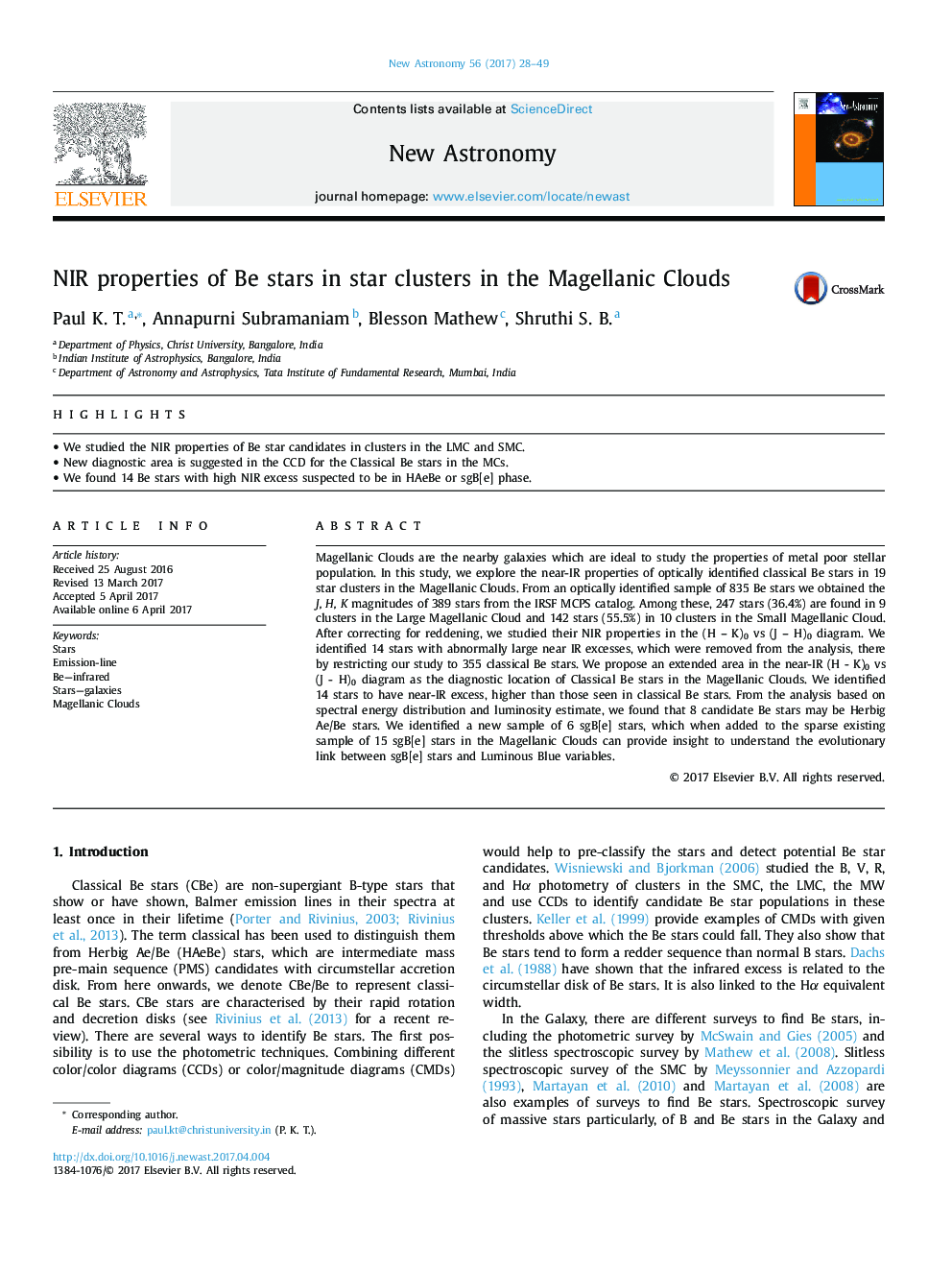| Article ID | Journal | Published Year | Pages | File Type |
|---|---|---|---|---|
| 5487788 | New Astronomy | 2017 | 22 Pages |
Abstract
Magellanic Clouds are the nearby galaxies which are ideal to study the properties of metal poor stellar population. In this study, we explore the near-IR properties of optically identified classical Be stars in 19 star clusters in the Magellanic Clouds. From an optically identified sample of 835 Be stars we obtained the J, H, K magnitudes of 389 stars from the IRSF MCPS catalog. Among these, 247 stars (36.4%) are found in 9 clusters in the Large Magellanic Cloud and 142 stars (55.5%) in 10 clusters in the Small Magellanic Cloud. After correcting for reddening, we studied their NIR properties in the (HÂ -Â K)0 vs (JÂ -Â H)0 diagram. We identified 14 stars with abnormally large near IR excesses, which were removed from the analysis, there by restricting our study to 355 classical Be stars. We propose an extended area in the near-IR (HÂ -Â K)0 vs (JÂ -Â H)0 diagram as the diagnostic location of Classical Be stars in the Magellanic Clouds. We identified 14 stars to have near-IR excess, higher than those seen in classical Be stars. From the analysis based on spectral energy distribution and luminosity estimate, we found that 8 candidate Be stars may be Herbig Ae/Be stars. We identified a new sample of 6 sgB[e] stars, which when added to the sparse existing sample of 15 sgB[e] stars in the Magellanic Clouds can provide insight to understand the evolutionary link between sgB[e] stars and Luminous Blue variables.
Keywords
Related Topics
Physical Sciences and Engineering
Physics and Astronomy
Astronomy and Astrophysics
Authors
Paul K. T., Annapurni Subramaniam, Blesson Mathew, Shruthi S. B.,
